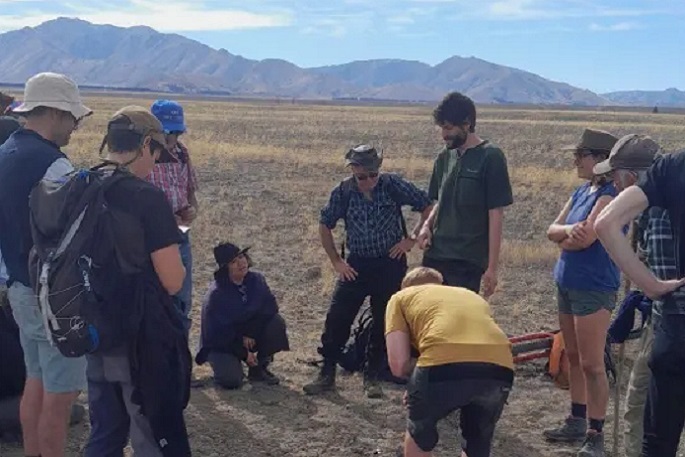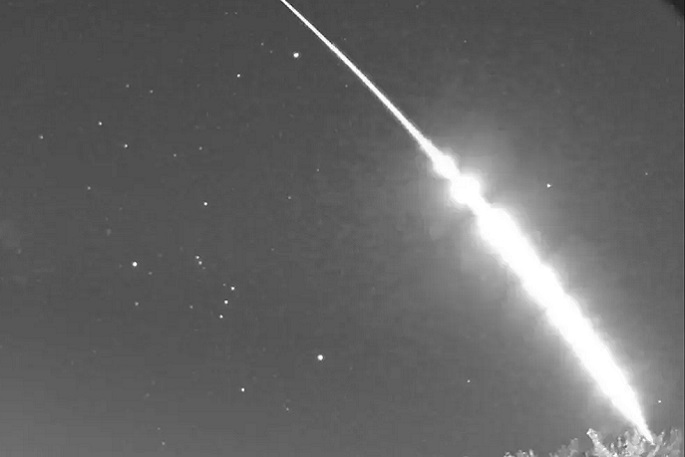Space enthusiasts are asking for security footage of what could have been a meteor crashing through the atmosphere.
Reports from the top of the South Island to Auckland on Easter Friday night described a bright light shooting across the sky or a loud a boom.
One person says their house shook.
However Jesse Stayte from the group Fireballs Aotearoa says an aeroplane contrail seen in the Bay of Plenty/Waikato region at the same time was making it difficult to work out what exactly had been seen.
But he says the boom could provide clues.
"The boom is quite diagnostic of it not being an aeroplane. We're looking for reports in the Whanganui-Waverley vicinity, that's where the boom's been reported."
Dashcam or security footage could show something landing on earth, so Fireballs Aotearoa are asking people to check their own security cameras and dashcams in case they contain clues.
With the current information, they could not yet give any useful advice about likely locations to begin hunting for a possible new meteor from this fireball sighting, but more information and images could help them narrow it down, says Jesse.
"People don't often point their security cameras directly at the sky, which is understandable, but sometimes there's a little bit that can be seen in the corner and in a situation like that, it could be all the data we need".
Earlier this month, on March 13, a fireball was seen from Queenstown and was found by a Fireballs Aotearoa search team last week south of Lake Tekapo.
 Searchers excitedly gathering around the newly discovered meteorite found on New Zealand soil, on 21 March. Photo: Supplied / Steve Wyn-Harris.
Searchers excitedly gathering around the newly discovered meteorite found on New Zealand soil, on 21 March. Photo: Supplied / Steve Wyn-Harris.That find was only the tenth meteorite discovered in New Zealand. A meteor becomes a meteorite when it hits Earth's surface. The most recent before that was found about 20 years ago.
And it is thought to be the first time in New Zealand that a fireball was tracked so that a meteorite could be retrieved.
Jesse says the timing of the meteors appearing so closely together was a coincidence.
But the group have been working to increase the odds of meteors being spotted, and perhaps even more being found.
Fireballs Aotearoa is a citizen science project that has so far set up about 110 specialised night-sky meteor spotting cameras across New Zealand, to help it spot meteors and narrow the search area for potential meteorites.
It is run by the astronomy community, the University of Otago and the University of Canterbury, and aims to install enough cameras across New Zealand that all of the motu would be covered.
 A camera at Dunstan School, that is trained on the skies as part of the Fireballs Aotearoa project to spot meteors Photo: Supplied/ University of Otago - James Scott
A camera at Dunstan School, that is trained on the skies as part of the Fireballs Aotearoa project to spot meteors Photo: Supplied/ University of Otago - James ScottThe two fireballs were definitely independent, Jesse says, but it does help that awareness about the first was fresh in people's mind.



0 comments
Leave a Comment
You must be logged in to make a comment.